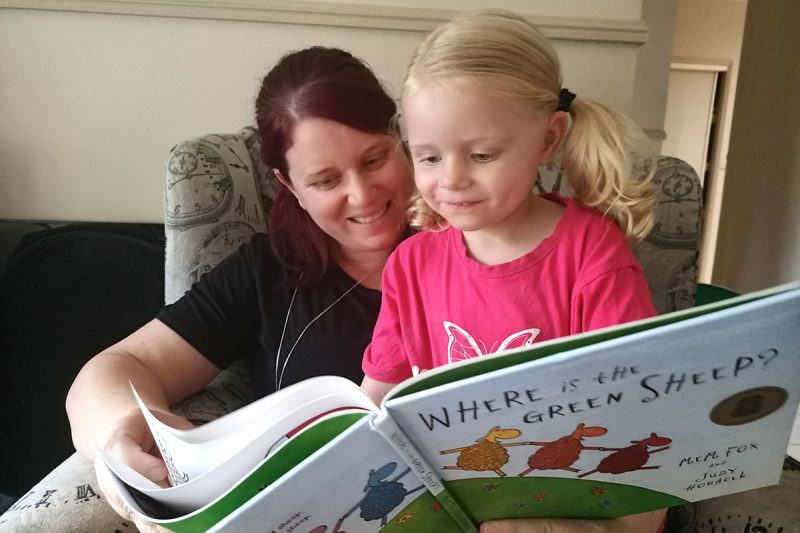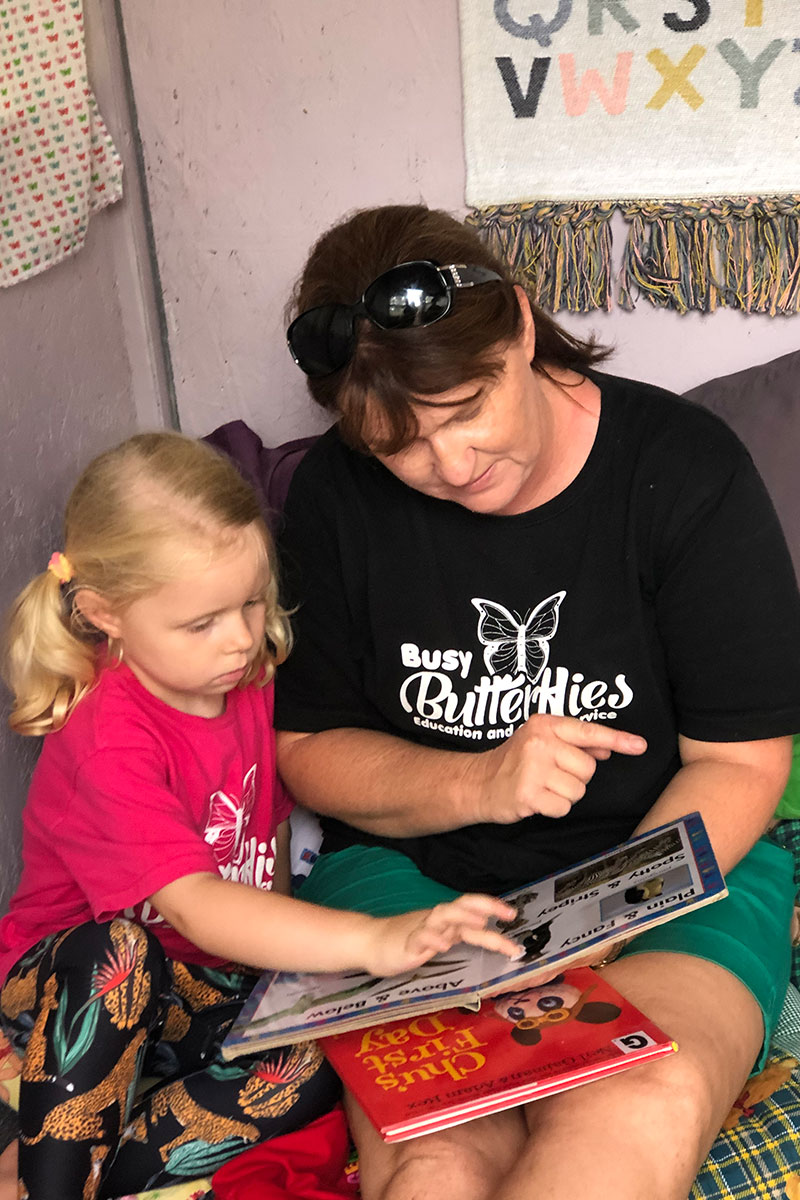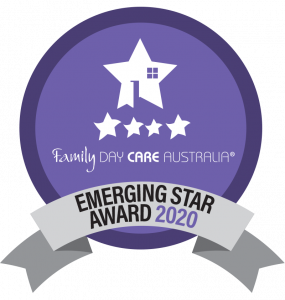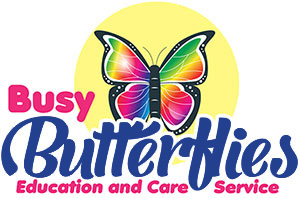The Abecedarian Approach
Busy Butterflies Education and Care Service is passionate about the implementation of the Abecedarian Approach into our service. Our educators are implementing and have implemented these strategies with children on a daily basis.
Busy Butterflies Education and Care Service have learning game packs available to loan to educators and families or information to share with families about the games and list what or required items for those games. The more parents use this Approach at home the greater the benefit for their child and their development.
Most of a child’s day includes eating, getting dressed, exploring, playing and interacting with adults. This gives opportunities for language rich interactions that are frequent and intentional should take place with your child throughout the day during all of these activities. Language allows children to organise their thoughts, explain their ideas, express their feelings, and gives them the tools to make connections with those around them.
Our Directors and coordination unit are all fully trained and the educators have had internal training and are fully supported in their practices, we are all available to help parents practice the Abecedarian Approach with their child.
We use these strategies in our playgroups role modelling to families of the service and in the local community. Providing them information and resources to continue the practises at home
So what is 3A?
The Abecedarian Approach (3a) is one of the few evidence-based, proven programs that integrates basic principles of human learning and development into a fun and effective approach to early childhood education.
The Abecedarian Approach, places a priority on children’s language acquisition, because research shows that language is key to children’s early learning and school readiness. Language allows children to organise their thoughts and explain their ideas; it gives them the means to express their feelings; and the tools they need to interact with peers and adults in order to make connections with those around them.
Language also allows children to use private speech, talking aloud to themselves to work through a problem or regulate their emotions. As our children get older, they internalise this speech so that it is no longer out loud but still a means of guiding their behaviour and navigating the world around them.
The Abecedarian approach focuses on developing frequent and intentional adult-child interaction, usually one-on-one, for children from birth to age 5. Research on the Abecedarian approach shows that it builds skills early on that last across the lifespan, emphasising the benefits of children learning in active, engaged, constructive, and interactive environments.
The four key elements of the Abecedarian Approach are the use of:
- Learning Games
- Conversational Reading
- Enriched Caregiving
- Language Priority
These techniques support children to create bonds and attachment with adults from ages 0-1, feel secure and know they’re supported when exploring the world from ages 1-3, and use play to explore from ages 3-5. The tools also support healthy emotional, social, and cognitive development in children.
Each of the elements of the Abecedarian Approach have been aligned with contemporary Australian Early Childhood policy, including The Early Years Learning Framework (EYLF) and the National Quality Standards (NQS)
For more information: 3a - Abecedarian Approach Australia (unimelb.edu.au)


Contact Busy Butterflies Education and Care Service
9 - 13 Flametree Court
Cedar Grove QLD 4285
Phone (07) 5543 3862
Email Us
Find Us


